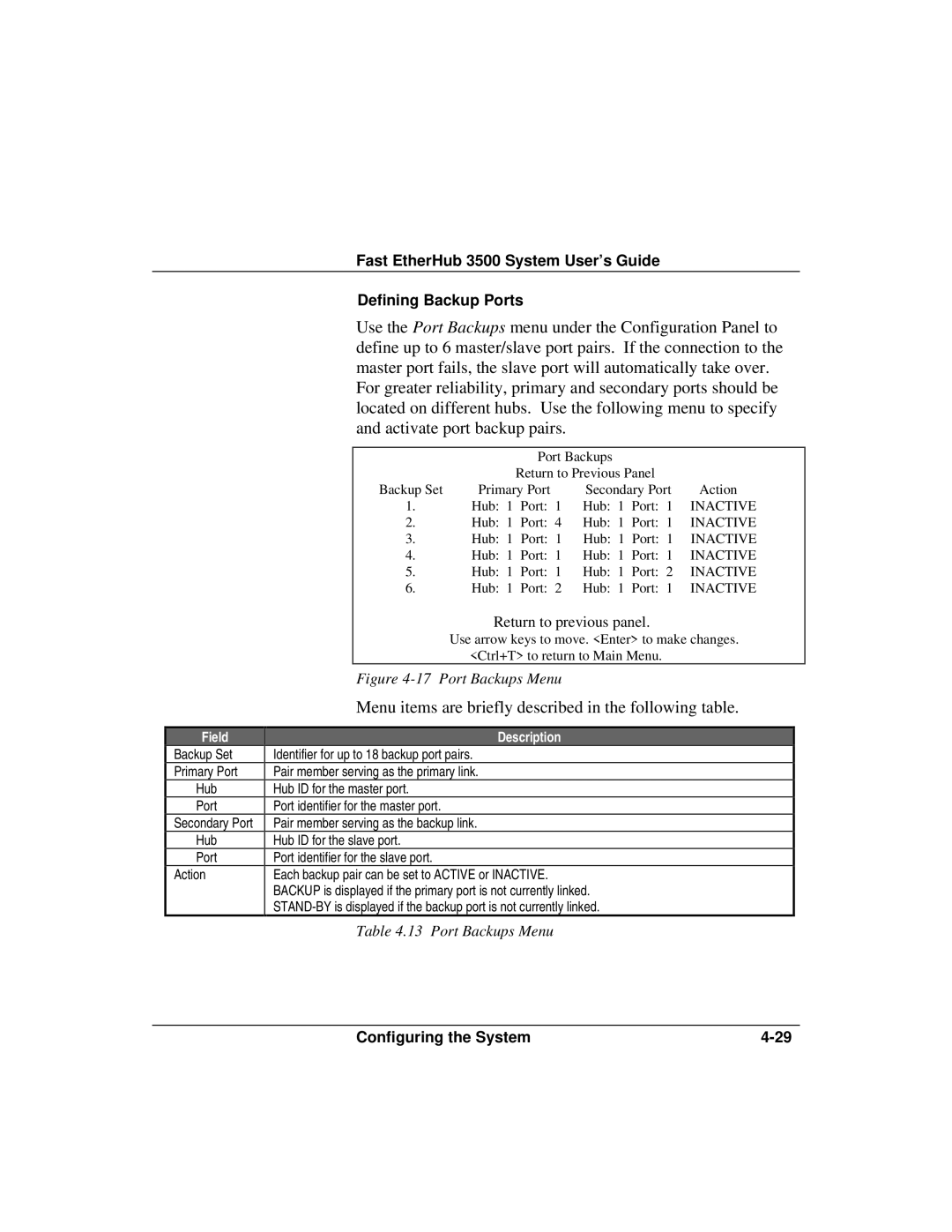
Fast EtherHub 3500 System User’s Guide
Defining Backup Ports
Use the Port Backups menu under the Configuration Panel to define up to 6 master/slave port pairs. If the connection to the master port fails, the slave port will automatically take over.
For greater reliability, primary and secondary ports should be located on different hubs. Use the following menu to specify and activate port backup pairs.
|
| Port Backups |
|
| |
|
| Return to Previous Panel |
| ||
Backup Set | Primary Port | Secondary Port | Action | ||
1. | Hub: 1 Port: 1 | Hub: 1 Port: 1 | INACTIVE | ||
2. | Hub: 1 Port: 4 | Hub: 1 Port: 1 | INACTIVE | ||
3. | Hub: 1 | Port: 1 | Hub: 1 Port: 1 | INACTIVE | |
4. | Hub: 1 | Port: 1 | Hub: 1 | Port: 1 | INACTIVE |
5. | Hub: 1 | Port: 1 | Hub: 1 | Port: 2 | INACTIVE |
6. | Hub: 1 | Port: 2 | Hub: 1 | Port: 1 | INACTIVE |
Return to previous panel.
Field
Backup Set
Primary Port
Hub
Port
Secondary Port
Hub
Port
Action
Use arrow keys to move. <Enter> to make changes. <Ctrl+T> to return to Main Menu.
Figure 4-17 Port Backups Menu
Menu items are briefly described in the following table.
Description
Identifier for up to 18 backup port pairs.
Pair member serving as the primary link.
Hub ID for the master port.
Port identifier for the master port.
Pair member serving as the backup link.
Hub ID for the slave port.
Port identifier for the slave port.
Each backup pair can be set to ACTIVE or INACTIVE.
BACKUP is displayed if the primary port is not currently linked.
Table 4.13 Port Backups Menu
Configuring the System |
